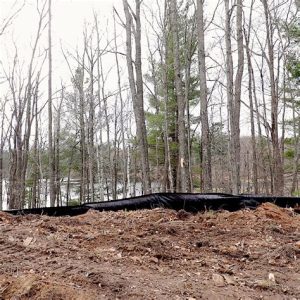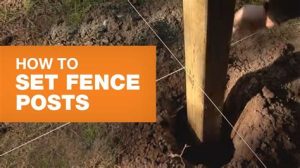Learn how to navigate local permit requirements, effectively communicate with contractors, gather necessary documents, and resolve permit-related issues for a smoother project experience.When it comes to installing a new fence, navigating the world of permits can often be a daunting task. Working with contractors not only simplifies the process but also ensures compliance with local regulations. This blog post aims to guide you through the essential steps of working with contractors on fence permitting, from understanding local permit requirements to addressing any issues that may arise along the way. Whether you’re a homeowner embarking on a DIY project or looking to hire professionals, knowing how to effectively communicate and coordinate with your contractors will help streamline the permitting process. With our step-by-step approach, you can make informed decisions, gather the necessary documentation, and set a clear timeline for your fencing project—all while fostering a collaborative relationship with your contractors. Let’s dive into the key elements of successfully navigating fence permitting!
Understanding local permit requirements
When it comes to installing a fence, understanding local permit requirements is crucial. Different municipalities have various regulations that dictate the type of fences you can build, their height, and the materials used. The permitting process is designed to ensure that construction complies with local zoning laws and safety standards.
Before beginning your project, consult your local government office. They typically provide resources outlining the specific requirements for construction permits in your area.
- Types of fences that are allowed (wood, vinyl, chain link, etc.)
- Height restrictions for residential and commercial properties
- Setback requirements—how far the fence must be from property lines
- Building codes related to fence installation
Failing to adhere to these regulations can lead to fines or even having to remove the fence after installation.
Communicating with contractors about permits
When it comes to working with contractors on your fence project, effective communication regarding permits is crucial. It’s not just about discussing the design and materials; understanding the permitting process is equally important. Begin by ensuring that both you and the contractor are on the same page about the local permit requirements that may affect your fence installation. This includes zoning laws, homeowner association guidelines, and any restrictions specific to your area.
Make it a point to schedule an initial meeting where you can outline your expectations. During this discussion, ask the contractor how they typically handle permitting. This includes their experience with local regulations, the average turnaround time for permits, and any fees associated with the permitting process. Share any information you have about required documentation or prior experiences you’ve had with permits in your area.
Additionally, encourage your contractor to proactively communicate any changes or updates regarding the permit application. Establish a timeline for when each phase of the project should occur, and agree on how often you will check in about the permit status.
Collecting necessary documentation for permitting
When it comes to fence permitting, collecting the necessary documentation is a crucial step that can significantly affect the approval process. This ensures that you have all required materials ready when working with contractors, ultimately facilitating a smoother timeline for your project.
It is essential to understand the specific documentation required in your local jurisdiction.
- Property Survey: This may help verify property boundaries.
- Design Plans: Detailed drawings or sketches of your proposed fence.
- Building Permits: Depending on local laws, a general building permit might be needed.
- Homeowner Association Approval: If you live in a community with an HOA, their approval may also be required.
It can be beneficial to create a checklist of all required documents before engaging a contractor. By ensuring that everything is in order, you not only expedite the workflow but also maintain good communication with the contractor regarding the status of your permit application.
In summary, being proactive in gathering the necessary documentation for fence permitting will set a positive tone for your project, enhancing collaboration with contractors and contributing to a more efficient permitting process.
Coordinating with contractors on permit timeline
When planning to build a fence, it’s essential to coordinate effectively with your contractors regarding the permit timeline. This coordination ensures that all necessary permits are obtained on time, preventing delays in the construction process.
First, establish clear communication with your contractors about the required permits and the specific timeline for obtaining them. It’s crucial to discuss deadlines and ensure that everyone is on the same page.
| Task | Responsible Party | Due Date |
|---|---|---|
| Submit permit application | Contractor | 1 week from start date |
| Review period by authorities | Permitting authority | 2-4 weeks |
| Obtain approval | Contractor | 1 week after review period |
Moreover, regular check-ins and updates on the permit status can help identify any potential delays early in the process. If issues arise during the permitting phase, promptly communicate with the contractor to discuss alternative strategies or revisions to the project timeline.
Resolving any permit-related issues with contractors
When working with contractors on fence projects, it’s inevitable that you might encounter some permit-related issues. Recognizing these challenges early can save you time and money. Here are some common problems and how to effectively resolve them.
Communication is key when dealing with contractors. If you notice any discrepancies or if your contractor seems unsure about the permitting process, address these concerns directly and promptly. It might be helpful to set up regular check-ins to discuss progress on permits and inspections. This will keep everyone on the same page and mitigate potential issues before they escalate.
In many cases, issues with documentation can arise. It’s crucial to ensure that all required documents are prepared and submitted accurately. If your contractor is having trouble obtaining specific permits, offer to assist them by collecting the necessary paperwork or by consulting local authorities to clarify requirements. This collaborative approach can lead to faster resolutions.
Lastly, if misunderstandings occur regarding the timeline for permits, make it a priority to lay out a clear schedule. Discuss the timeframes for permit approval and forewarn your contractor about any project deadlines.
Frequently Asked Questions
What is the first step when working with a contractor for fence permitting?
The first step is to research local regulations and permitting requirements for fence installation in your area.
How can I find a reliable contractor for my fence project?
You can find a reliable contractor by asking for recommendations from friends or neighbors, checking online reviews, and verifying their credentials and licenses.
What documents do I need to provide for fence permitting?
Typically, you’ll need to provide site plans, property surveys, and any necessary identification or ownership documents when applying for a permit.
How can I ensure my fence meets local zoning laws?
Consult with your contractor and local zoning office to confirm compliance with height restrictions, placement, and design regulations.
What should I discuss with my contractor before starting the project?
Discuss project timelines, costs, material options, and their experience with the specific permitting process in your area.
Are there common mistakes to avoid when working with contractors on fence permitting?
Yes, common mistakes include not checking the contractor’s credentials, failing to obtain all necessary permits beforehand, and not communicating clearly about expectations.
What happens if my fence doesn’t comply with the permit requirements?
If the fence doesn’t comply, you may be required to modify or remove it, which can lead to additional costs and delays.





